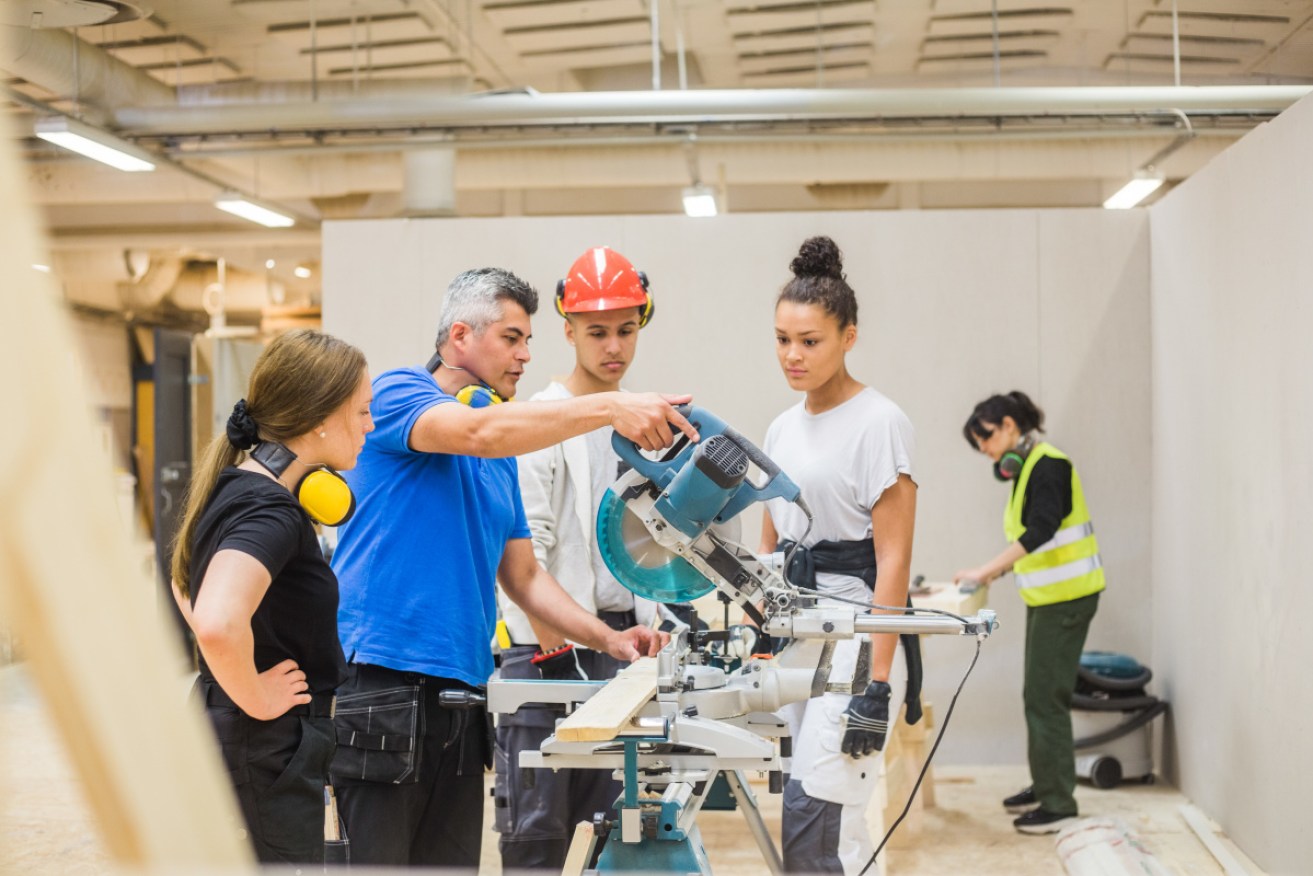Groundhog day with Victorian skills crisis


Victoria’s path to recovery will be a slow and painful one, if we don’t find ways to quickly bring-in the skills that businesses are craving to grow. Photo: Getty
With vocational education and training in Victoria a key cog in the plan to supercharge the economy in the wake of COVID-19, the State Government commissioned review led by Jenny Macklin has missed the opportunity for real change.
The Victorian VET and TAFE system are currently a massive drag on productivity, failing to churn out the skills required by industry to grow businesses which create jobs.
TAFE continues to see completion rates below 50 per cent. For every dollar we spend on a student, we lose more than two.
In construction – which will be a key driver of the nation’s economic recovery post-pandemic – a student has a 57 per cent chance of getting a job in their chosen vocation after completing their TAFE course.
These are frightening statistics and industry was looking to the Macklin Review for big ideas that would fix a broken system.
What was the big idea that was put forward? The review proposes a new government agency to be called FutureSkills Victoria to lead a bunch of reforms to VET and TAFE, most of which we’ve seen and heard before from the Government.
When the big idea in a government review is more bureaucracy you know the report is going to end up on a bookshelf.

Erik Locke is the CEO of construction body Incolink. Photo: Incolink
There are the usual bureaucratic noises about a new Victorian Skills Plan to be drafted each year, better and more publicly transparent data for decision making and a new ‘model’ for financing the VET – all of which is fair and reasonable.
But essentially the review says we should keep doing what we’re doing, just do it better.
For industry, desperate for skills to fuel growth in the wake of the pandemic, this was groundhog-day – not a plan to tackle a crisis which demands new thinking.
While problems with workforce skills have been apparent for some time, the collapse in migration in the wake of the pandemic – both interstate and international – will be possibly the single biggest drag on the economic recovery.
A key part of the solution must be industry-led training and addressing the persistent failure of the TAFE and VET systems to invest in capital intensive, highly skilled training that industry needs.
We need to let TAFE do what it is good at and then fund industry to deliver capital intensive, practical work-place training that TAFE has never been able to do well – and never will.
The Macklin Review had virtually nothing to say on these matters, other than a handball to the Federal Government to set up what it calls Lifelong Learning Accounts.
Victorians don’t want to see buck passing, they want the State Government to lead in areas of the economy where they have the levers to impact outcomes – and vocational training is at the top of that list.
Instead of relying on TAFE to do it alone, we must elevate the status of industry-led training models, with industry and unions working together to tackle the skills issues in their sector.
These models already see higher levels of satisfaction and completion than TAFE and deliver more job-ready students.
They are funded primarily by the industry where the skills shortages exist and would realise their full potential if embraced and supported by Government.
We need a long-term, demand-based investment model which shifts people out of the cheap and easy business management courses to where skills are actually needed in areas like construction, to match the Government substantial investment in housing and infrastructure to stimulate the economy – something for which the Government deserves much credit.
Victoria’s path to recovery will be a slow and painful one, held back by falling immigration if we don’t find ways to quickly bring-in the skills that businesses are craving to grow.
A hard look at the numbers in construction tells the story.
The industry generates $360 billion in national revenue (a 9 per cent share of GDP), employs around 1.18 million people and supports more small businesses than any other industry in the country.
We need more than 250,000 extra construction workers by 2024 even accounting for the short term drop experienced in 2021 – and about a third of those are needed in Victoria.
Contributing to the expected shortfall is the decline in apprenticeship and trainees in Australia which has fallen by more than 30 per cent since 2013, which combined with our low natural population growth means we haven’t produced the number of skilled people the industry needs for a very long time.
We brought 270,000 people into the country with immigration to help fill the shortfall, with that number plummeting to almost nothing in the wake of the pandemic.
TAFE and the Vocational Education and Training system will always have a central role in our system, but a conservative business-as-usual blueprint will not get the job done.
Incolink is Australia’s oldest, largest and most comprehensive workers’ entitlement scheme. Incolink is the safety net for the building and construction industry.